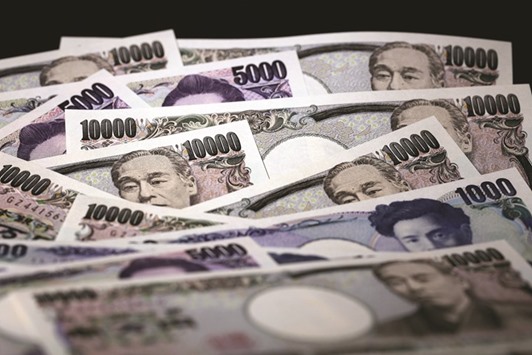Goldman Sachs Group is keeping faith with Bank of Japan (BoJ) Governor Haruhiko Kuroda’s ability to influence markets, predicting the yen will slide 13% against the dollar by this time next year. “We are very bearish the yen,” analysts led by New York-based chief currency strategist Robin Brooks wrote in a report. “There is only one way forward for the BOJ in its pursuit of reflation: to continue surprising markets on the dovish side.”
Brooks and his colleagues predict imminent declines, with the yen weakening to 115 per dollar by August, 120 by November and 125 in 12 months. The Goldman Sachs analysts also point to a computer model that suggests the exchange rate should be closer to 133 per dollar, a level not seen since 2002.
The yen slipped 0.2% to 110.23 as of 6:55am New York time after Kuroda reiterated the BoJ will expand monetary easing measures if factors including the currency put its inflation goal at risk.
The yen’s 9% gain versus the greenback this year - the biggest among the Group-of-10 currencies - surprised many forecasters, who at the end of 2015 had a median estimate for a slide to 124 by mid-year.
That estimate now stands at 110 after a global rout in stocks and commodities at the start of the year boosted the yen’s appeal as a haven. Kuroda’s shock announcement of a negative deposit rate on January 29 weakened the currency only briefly, and an April 28 decision to refrain from adding to stimulus spurred the biggest jump since 2010.
The yen has depreciated in each of the four previous years, a record losing streak, driven largely by two rounds of quantitative easing.
The 36% decline over that period initially succeeded in stoking inflation more than halfway to the BoJ’s 2% target, but consumer prices have now been stagnant for more than a year.
Japan “presents more questions than answers, with the economy swinging into and out of recession and inflation well below the target,” said Carl Hammer, chief currency strategist at SEB AB in Stockholm. “Still, we expect the yen to fall back again.”
The yen is no longer “massively” undervalued and the BoJ is likely to cut interest rates further in July after the announcement of more fiscal stimulus measures next month, Hammer said.
Abandoned Trades Buying the dollar against an equally weighted basket of yen and euros was among Goldman Sachs’s six recommended top trades for 2016. Six weeks into the year it had abandoned all but one of them, including the currency call.
Even so, Brooks and his colleagues stand behind the rationale for the trade. In addition to further yen-depreciating BoJ stimulus, Goldman Sachs predicts a 3 percentage-point increase in the federal funds rate target through 2019, boosting the dollar.
The Wall Street firm’s regression analysis, which factors in nominal rate differentials, global risk appetite and commodity prices, is yielding an overvaluation signal for the yen for the first time since 2012, according to the research note.
However, the analysts suggest even 133 may not be weak enough based on the model. “Nominal rate differentials have failed to adequately capture the regime shift at the BoJ,” they wrote. “The degree of yen overvaluation is understated.”

Japanese yen banknotes of various denominations are arranged for a photograph in Tokyo. The yen has depreciated in each of the four previous years, a record losing streak, driven largely by two rounds of quantitative easing.


